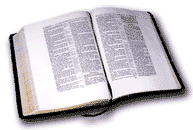AUTHOR: Merrill Tenney
observes: "If the criteria of vocabulary and style
are ever adequate for pronouncing judgment on
authorship, these three short letters must be
attributed to one author who is also the author of
the Fourth Gospel. All four of these writings were
probably produced about the same time and at the
same place." Although none of these three short
letters attributed to John actually bear his name,
the similarities within all the writings and a
strong early church tradition identifies the author
as the Apostle John, "whom Jesus loved." The
strongest evidence is for John the Apostle as the
author of all three letters, the Gospel of John, and
Revelation. He was the son of Zebedee. Some scholars
argue for another John (the elder or presbyter).
Every piece of evidence points to John the elder
being the same person as John the apostle and author
of this letter.
DATE:
All three were written about A.D. 85, or late 80’s
and early 90’s. These letters were probably written
after the Gospel of John and before the persecution
under Domitian in A.D. 95.
PLACE OF WRITING:
Probably from Ephesus because there is a strong
tradition that John spent his old age in Ephesus. He
had been exiled not far away on the island of Patmos
(Rev. 1:9).
The first epistle opens
by summarizing the Fourth Gospel (I John 1:1; cf.
John 21:31). The stated purpose of the First Epistle
is found in 5:13, and carries the reader one step
beyond the Gospel. "The Gospel was written to arouse
faith; the First Epistle was written to establish
certainty," observes Tenney.
E. J. Goodspeed suggests
the Second and Third Epistles may have been written
as "covering letters," one to the church, addressed
under the figure of the "elect lady" (II Jn. 1), and
the other to Gaius, the pastor (III Jn. 1). They
were intended to be private notes of counsel and
greeting, whereas the main body of teaching was
contained in the Gospel and in the First Epistle.
FIRST EPISTLE OF JOHN
RECIPIENTS:
The lack of personal references in this letter
indicates that it was written in sermonic style to
Christians all over Asia Minor. It was probably a
circular letter, much like Ephesians.
PURPOSE:
The purpose of this letter was to tell believers how
they might know they have eternal life. This epistle
deals with the same heresy that Paul confronted in
his Epistle to the Colossians: Gnosticism. (See the
handout on Gnosticism: The Colossian Heresy). The
readers were preoccupied with a secret "knowledge"
which is evident by how many times John uses the
word "know" in this letter. He writes to strengthen
their faith and fellowship and warn them about the
false teachers with their "secret" knowledge.
KEY VERSE:
I John 5:13
KEY WORDS:
know, believe, life, light, love, and fellowship.
Study the opposites in this letter (cf. "light" and
"darkness," "life" and "death," "truth" and "lying,"
etc.). These same themes are developed in the Gospel
of John.
The English does not
bring out the differences in the tenses in the Greek
verbs in I John 1:8, 10 and 3:9. The original brings
out the fact that the born again believer does not
sin habitually, though he may commit individual
sins. He does not continually live in sin.
SECOND EPISTLE OF JOHN
PURPOSE:
The second epistle is a personal letter from the
Apostle to the "elect lady." Much discussion has
been around who this "lady" is. Should this
salutation be translated "the lady Electra and her
children," "the elect Cyria and her children," or
"the elect lady and her children"? Is the word
"lady" used figuratively for a church or an
individual Christian friend? If it is figurative
then the "chosen sister" in v. 13 would mean a
different church, otherwise, the "sister" would be a
natural sister. I think the best approach is to
consider the letter as addressed to a Christian
woman who was a friend of the Apostle. Did John
write other letters that we do not have (cf. I Jn.
2:14; III Jn. 9)? II John is just long enough to be
accommodated on a standard sized sheet of papyrus
(10" x 8"), conforming to the pattern of letters in
the first century.
OCCASION:
John sends this postcard to the "elect lady" to
correct a situation that had developed from the
normal practice of showing hospitality to itinerant
teachers and preachers. It was common practice for
people to open their homes to those in the ministry.
Jesus was a frequent guest in the home of Mary and
Martha in Bethany. Some Christians were
inadvertently providing this type of support to the
false teachers. Loving believers (II Jn. 5-6) must
not be construed as the encouragement of false
doctrine.
THEME:
Practice the truth and have nothing to do with false
teachers.
KEY VERSE:
v. 9
KEY WORD:
truth
THE THIRD EPISTLE OF
JOHN
RECIPIENT:
The letter is addressed to Gaius which is a very
common Greek name. He is described as a "dear
friend" who was loved by the aged apostle (vv. 1, 2,
5, 11). Perhaps Gaius had been a dear loyal friend
of John’s for a long time.
PURPOSE:
Gaius, a Christian friend, had contributed to the
missionaries who had desired to visit his church.
One Diotrephes, the self-assertive church boss had
an anti-missionary spirit, and influenced the church
not to receive missionaries. Diotrephes had
succeeded in having Gaius excommunicated from the
membership. John condemns Diotrephes and commends
Gaius for his faithfulness. Demetrius may have been
a traveling teacher and probably delivered the
letter to Gaius. There are words of praise to Gaius
for his hospitality for missionaries, and
condemnation for Diotrephes.
THEME:
A healthy believer will follow the truth, help
others and do good.
KEY VERSE:
v. 4
KEY WORDS:
truth, walk, good, evil
STYLE:
This letter is a very personal letter.
Gnosticism: The Colossian
heresy addresses the same heresy that the apostle
John confronts in his letters.
Title: Introduction to
Epistles of John
Series: Introduction to
Bible Books



